Main menu
Common skin conditions

NEWS
Join DermNet PRO
Read more
Quick links
Lesions (benign) Diagnosis and testing
Author: Naomi Ashman, Dermoscopist, Torbay Skin, Auckland, New Zealand; DermNet New Zealand Editor in Chief, Adjunct A/Prof Amanda Oakley, Dermatologist, Hamilton, New Zealand. Created February 2019.
Introduction Clinical features Dermoscopic features Differential diagnoses Histology
A blue naevus is a common type of melanocytic naevus in which the pigment is situated deep in the dermis. It is also known as a blue neuronaevus and a dermal melanocytoma.
A blue naevus is a well-circumscribed round or oval macule, papule or nodule of a uniform steel blue colour. The border fades gradually into the surrounding skin.
In adults, the lesion is often long-standing. The most common age of onset is late childhood or adolescence.
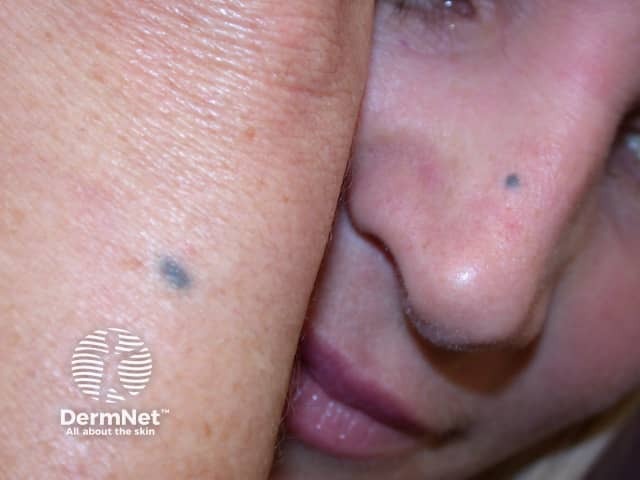
Blue naevus
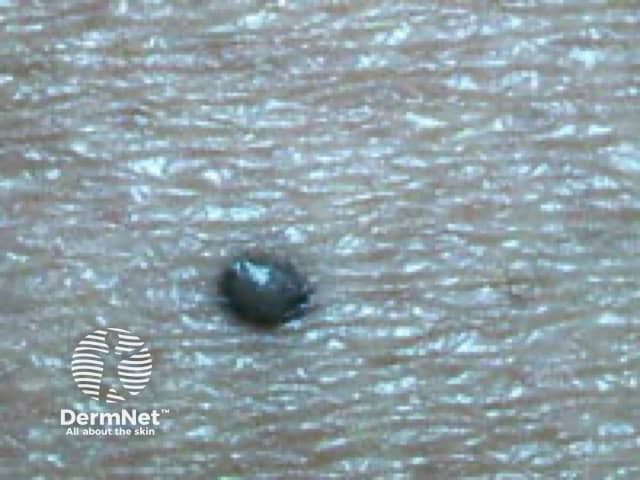
Blue naevus
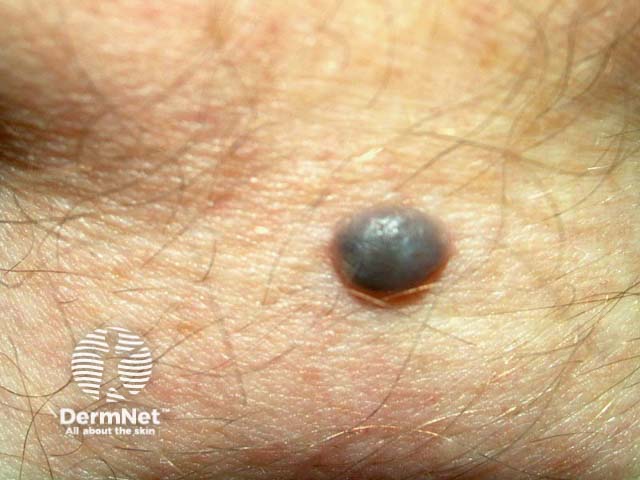
Blue naevus
The dermoscopic hallmark of a blue naevus is homogeneous blue pigmentation. In some exceptional cases, they may exhibit blue globules and dots [1].
Dermoscopic features of a blue naevus are:
The presence of any of the following structures should warrant further investigations for melanoma: network, dots, clods, streaks, vessels, additional colours.
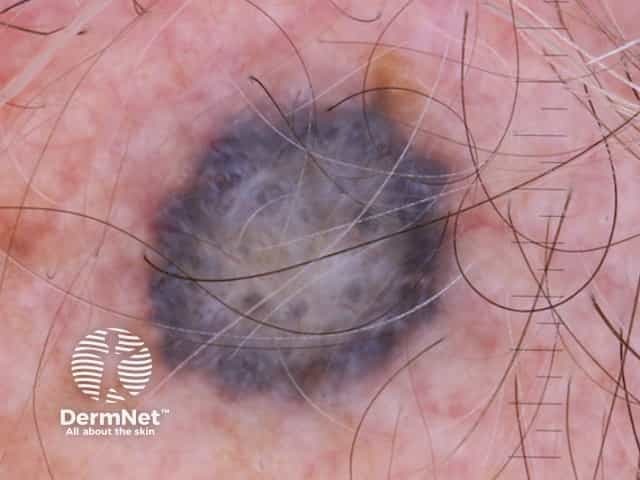
Blue naevus, cellular type
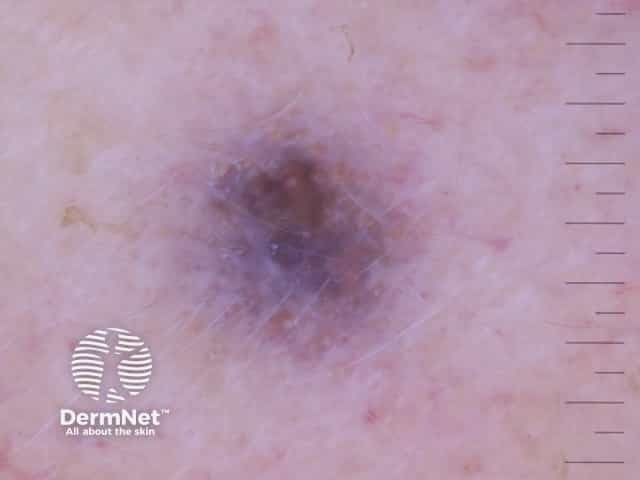
Blue naevus

Blue naevus
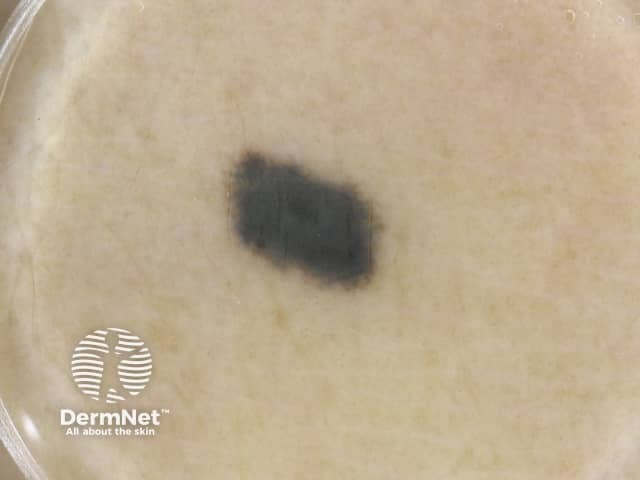
Blue naevus

Blue naevus
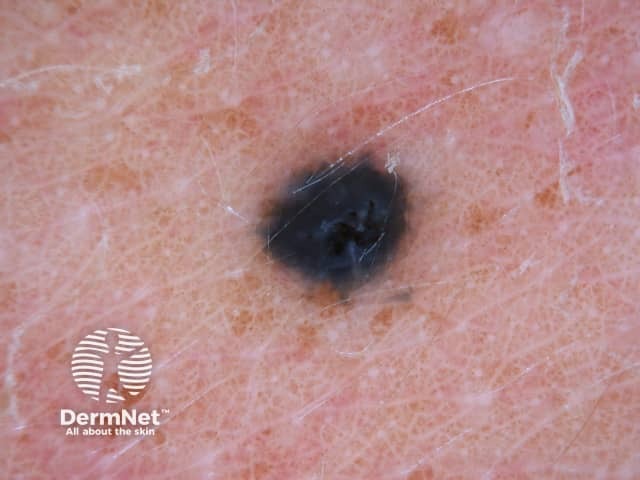
Blue naevus

Blue naevus
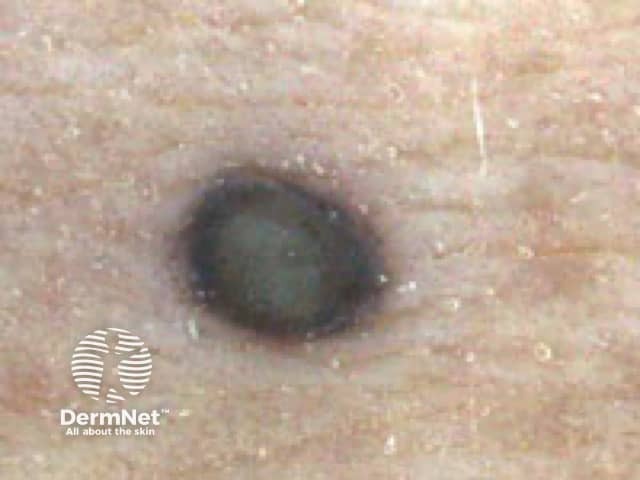
Blue naevus dermoscopy
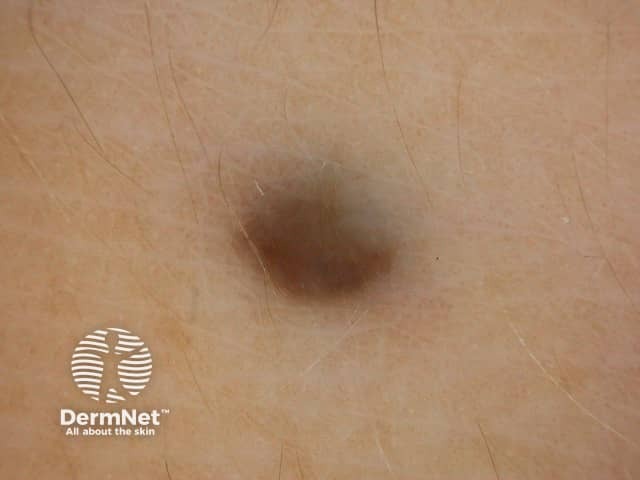
Blue naevus
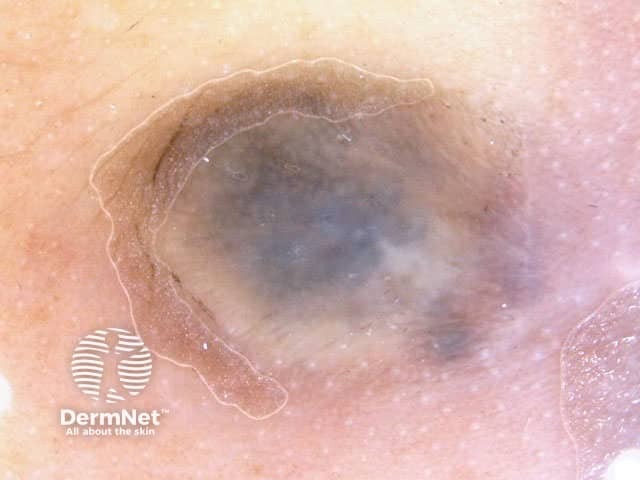
Blue naevus
The primary concern of a lesion presenting as a blue naevus with unknown history is that it could be one of the following:
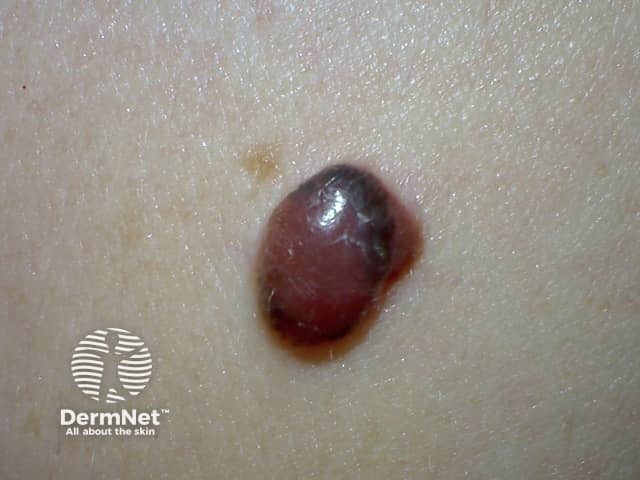
Nodular melanoma
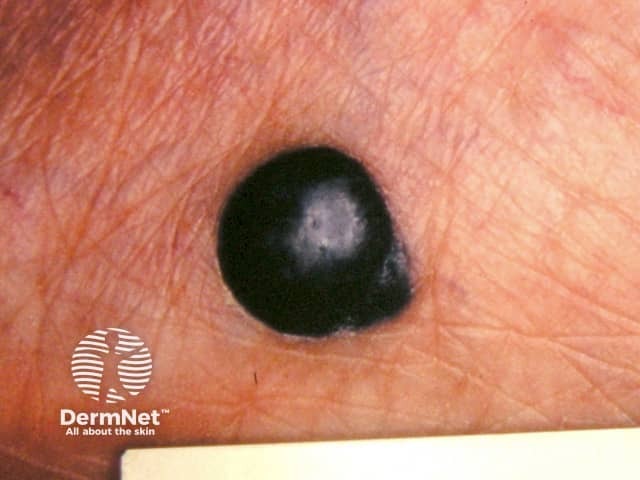
Nodular melanoma

Nodular melanoma
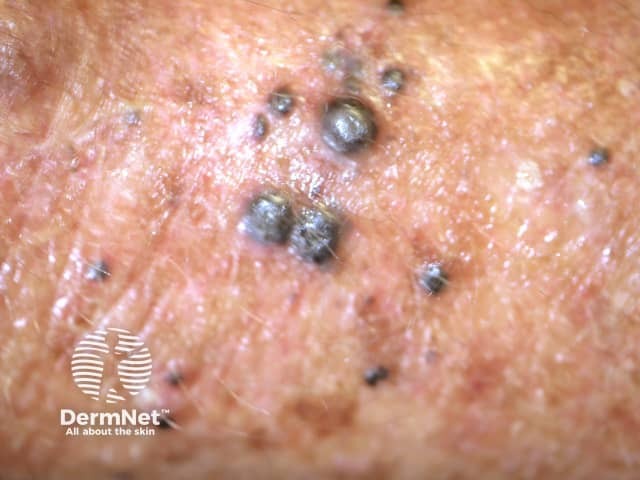
Melanoma metastasis
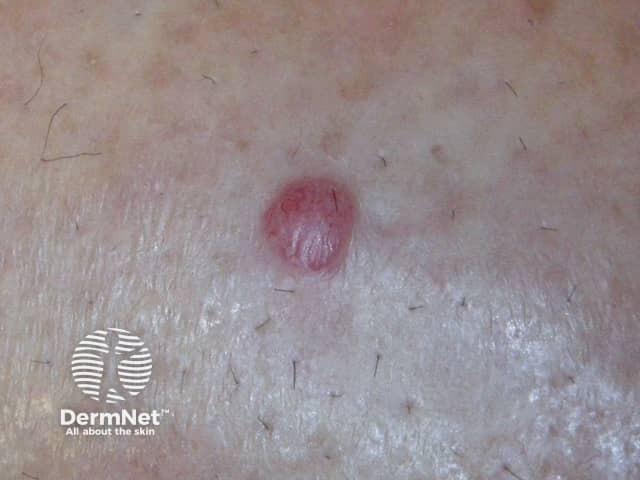
Melanoma metastasis
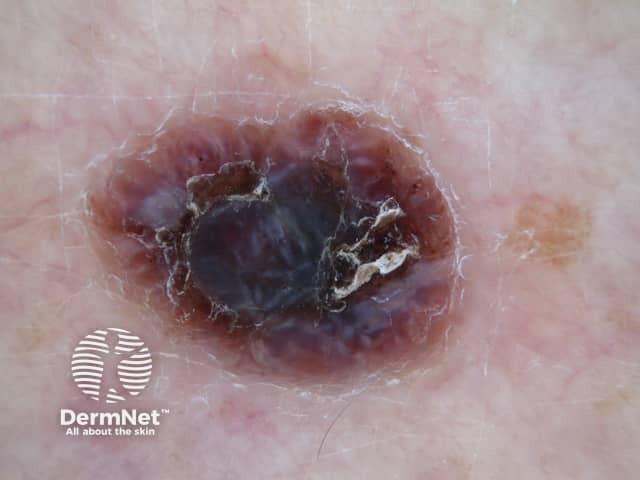
Dermoscopy of nodular melanoma
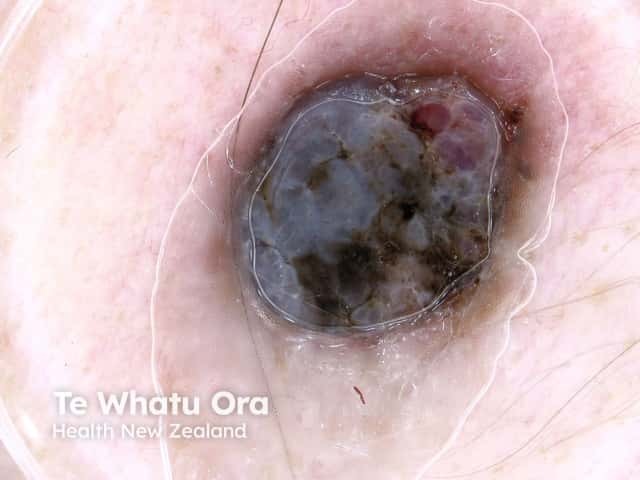
Dermoscopy of nodular melanoma
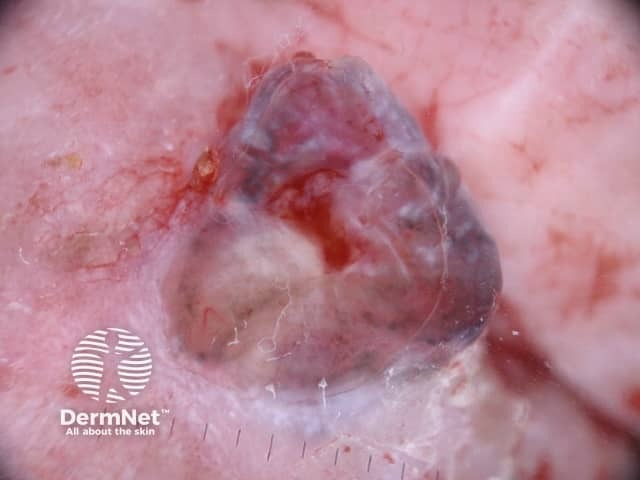
Dermoscopy of metastatic melanoma
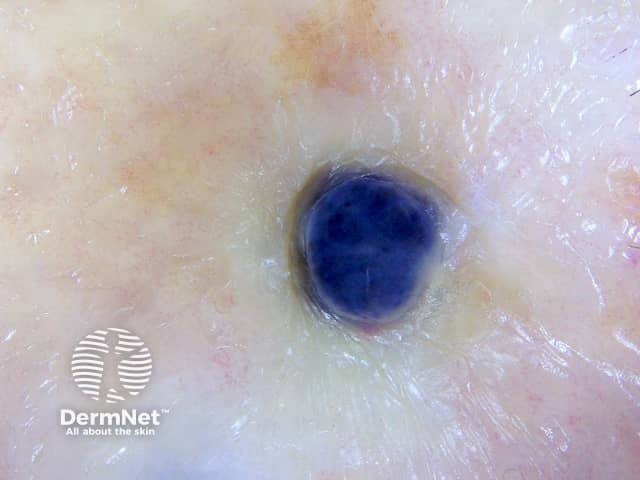
Dermoscopy of metastatic melanoma
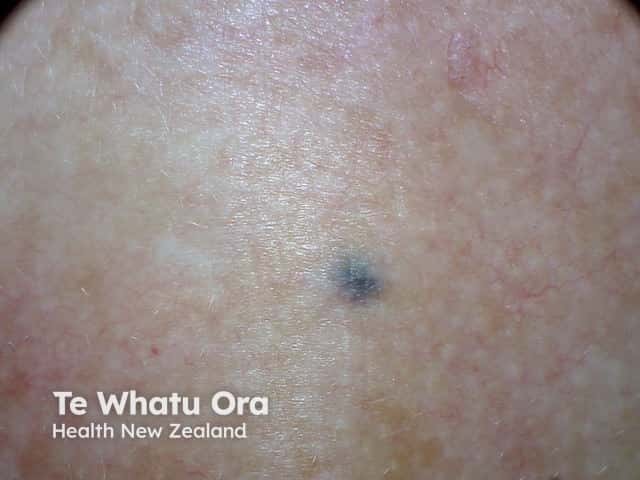
Radiation tattoo
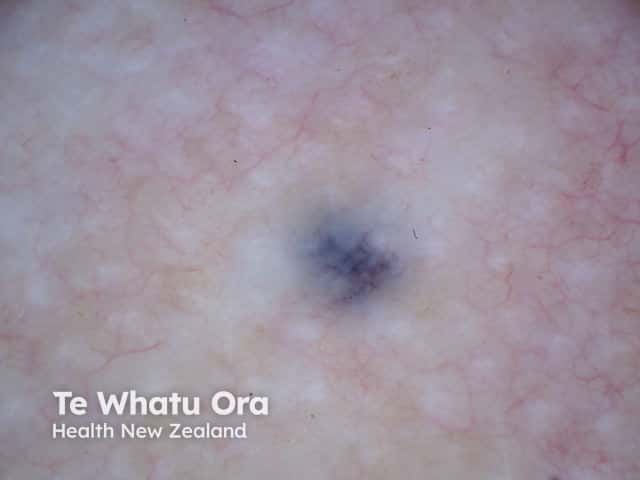
Dermoscopy of radiation tattoo
The histological explanation of a blue naevus is: